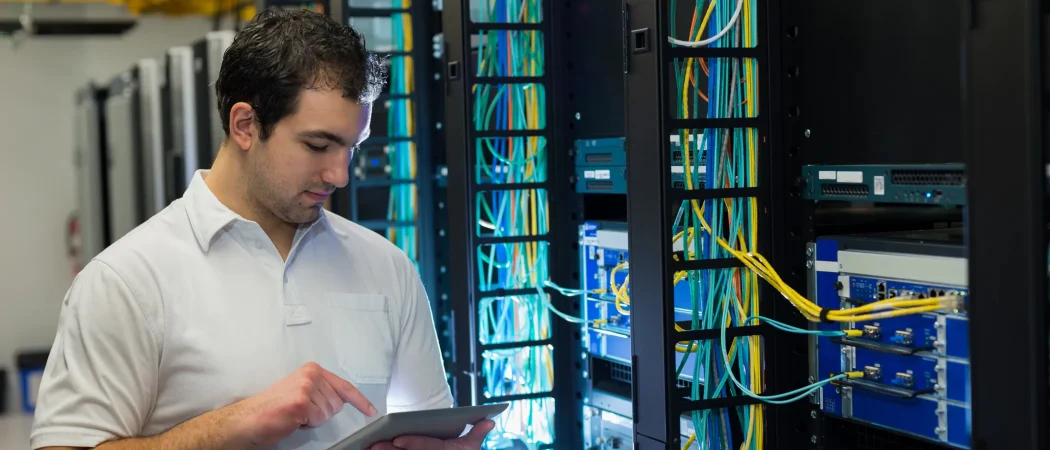"*" indicates required fields
Imagine trying to set up a new network or upgrade an old one without the right help—it could be a real mess! That’s where a cable contractor steps in. These experts are like the architects of your network, handling everything from planning to the final setup. Whether you’re dealing with Cat 5 cabling, Cat 5e cable wiring, or the more advanced Cat 6 cabling, they ensure everything is done right. Curious about what goes into their job and how they make your network work perfectly? Let’s explore their essential roles and the best techniques they use in 2024.

A cable contractor begins by planning your network setup. They evaluate your needs and design a network layout that fits your space. This includes mapping out where cables will go and how they will be connected. A well-thought-out plan ensures the network is efficient and meets your specific requirements. A solid design helps prevent future issues and supports seamless network performance.
Next, the contractor picks the right cables based on your needs. Here’s a quick guide:
The choice depends on how fast you need your network to be and what type of setup you have. Choosing the right cables ensures you get the best performance for your needs.
Once the cables are selected, the contractor installs them. This process involves running cables through walls, ceilings, or floors and connecting them to your devices. The installation must be done neatly and securely to avoid future issues. Proper installation ensures that your network operates efficiently and remains visually tidy. A neat setup also makes future maintenance easier.
Finally, the contractor tests the installed cables to ensure that everything works properly. They check signal strength and data transfer speeds to confirm that there are no issues. This testing phase ensures that the network functions as expected and meets your requirements. Thorough testing helps identify and fix potential problems before they impact your network’s performance.
Following these steps, a cable contractor ensures your network is well-designed, properly installed, and thoroughly tested for optimal performance.
When setting up Cat 5e or Cat 6 cables, following the best techniques to get a reliable and efficient network is important. Here’s a friendly guide to what you need to know:
Picking a Cat 5 cabling contractor or Cat 6 cabling installer who uses these techniques will ensure a solid and reliable network setup.
Finding the right contractor is key to a smooth installation, whether you need CAT 5 cabling, CAT 6 cabling, or fiber optic. Make sure they meet these criteria for the best results!
At Network Drops, we blend quality with reliability to ensure your network cabling contractor needs are met with precision and care. Whether you’re looking for CAT 5 cabling, CAT 6 cabling, or advanced fiber optic installations, our team is ready to provide top-notch solutions tailored to your requirements. We handle everything from initial setup to ongoing maintenance, ensuring your network runs smoothly.
Connect with us today and experience working with true professionals in CAT5e cable wiring and beyond. We’re here to help you stay connected and efficient. Reach out to Network Drops now!
The cost of cable installation can vary widely based on several factors. These include the type of cabling you choose, the size of the covered area, and any extra work required (like drilling or cable management). For a precise estimate tailored to your needs, it’s best to consult a professional installer who can assess your situation and provide a detailed quote.
While it’s possible to tackle network cabling as a DIY project, hiring a professional is often better. A skilled installer will ensure the cabling is done correctly, adhering to safety standards and optimizing performance. They can also handle any troubleshooting and ensure your network operates smoothly without potential issues.
It’s generally recommended that your network cabling be inspected every 2 to 3 years. Regular inspections help identify issues early on, such as wear and tear or performance problems. Keeping up with these checks can prevent more serious issues and ensure your network remains reliable and efficient.
Look out for signs like slow network speeds, frequent disconnections, or noticeable physical damage to your cables. These issues can indicate that your current cabling is no longer sufficient for your needs. If you’re experiencing these problems, it might be time to consider an upgrade to improve performance and reliability.
Scott Fcasni is the driving force behind Shock I.T. Support’s commercial datacomm cabling division, delivering expert solutions that power reliable, high-performance network infrastructures. With extensive experience in structured cabling and a commitment to precision, Scott ensures that every project—whether for small businesses or large enterprises—meets the highest standards of quality and scalability.